
Pisces, Aquarius, Capricorn & Jones Ltd. is the fourth album by the Monkees. It was released on November 6, 1967, during a period when the band exerted more control over their music and performed many of the instruments themselves. However, although the group had complete artistic control over the procceedings, they invited more outside contributions than on their previous album, Headquarters, and used session musicians to complement their sound. The album also featured one of the first uses of the Moog synthesizer in popular music. Pisces, Aquarius, Capricorn & Jones Ltd. sold over three million copies. It was the band's fourth consecutive album to reach No. 1 on the U.S. Billboard 200.
FM is a Canadian progressive rock music group formed in 1976 in Toronto, by Cameron Hawkins and Jeff Plewman. The band existed from 1976 to 1989, 1994–1996, 2006, and 2011–present. They have had periods of inactivity during their existence. Their music has been categorized as space rock, and lyrics are dominated by science fiction themes. In November 2011, Hawkins reformed the band with two new players.

Good Old Boys is the fourth studio album by American musician Randy Newman, released on September 10, 1974 on Reprise Records, catalogue number 2193. It was Newman's first album to obtain major commercial success, peaking at number 36 on the Billboard 200. The premiere live performance of the album took place on October 5, 1974, at the Symphony Hall in Atlanta, Georgia, with guest Ry Cooder and Newman conducting the Atlanta Symphony Orchestra.

Initiation is the sixth album by American musician Todd Rundgren, released May 23, 1975 on Bearsville Records. With this album, Rundgren fully embraced the synthesized prog sound he had begun exploring in more depth in his work with his band Utopia. However, unlike Utopia, in which Rundgren had limited himself to playing guitar, most of the synthesizers on Initiation were played and programmed by Rundgren himself.

Gentlemen Take Polaroids is the fourth studio album by the English band Japan, released in November 1980 by Virgin Records.
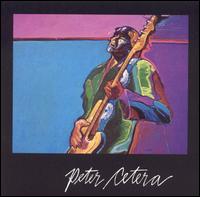
Peter Cetera, released in September 1981, is the self-titled first solo release by American musician Peter Cetera, released while he was the bassist and lead vocalist of the band Chicago.

"Hey You" is a power ballad by English rock band Pink Floyd, released on their 1979 double album The Wall. The song, along with "The Show Must Go On", was edited out of the film for fear on the part of the filmmakers that the film was running too long; however, a rough version is available as an extra on the 25th Anniversary Edition DVD.

Cyclone is the eighth studio album by Tangerine Dream and the first in their canon to feature proper vocals and lyrics. The cover is a painting by band leader Edgar Froese.
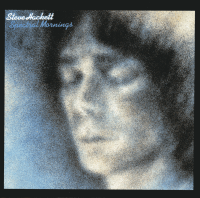
Spectral Mornings is the third studio album by English guitarist and songwriter Steve Hackett, released in May 1979 on Charisma Records. It is his first to feature members of his touring band, which many Hackett fans consider as the "classic line-up". The musicians are his brother John Hackett, Nick Magnus, Dik Cadbury, John Shearer, and Pete Hicks.
Colosseum II was a British progressive jazz-rock band formed in 1975 by former Colosseum drummer and bandleader Jon Hiseman, which featured guitarist Gary Moore.
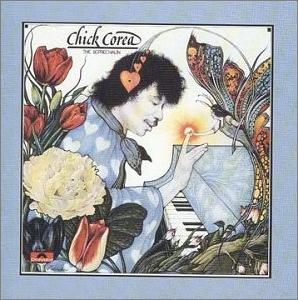
The Leprechaun is the ninth solo album by Chick Corea, released in 1976. It features horn and string sections, and vocals from Corea’s wife Gayle Moran, formerly of Mahavishnu Orchestra.
"Starless" is a composition by English progressive rock band King Crimson. It is the final track on their seventh studio album, Red, released on 1 October 1974.

Man-Child is the fifteenth studio album by jazz pianist Herbie Hancock. The record was released on August 22, 1975 by Columbia Records. It was the final studio album to feature The Headhunters, and a number of guest musicians including saxophonist Wayne Shorter, a full brass section, three different guitarists, and Stevie Wonder on harmonica.

The Steve Howe Album is Yes guitarist Steve Howe's second solo album. It was released in 1979. The album features Yes band members Alan White, Bill Bruford and Patrick Moraz. Also featured is Jethro Tull's former drummer Clive Bunker on percussion on Cactus Boogie. Ronnie Leahy is also featured on keyboards for two songs; he would later play with Jon Anderson on his second solo album, Song of Seven in 1980.

Selected Works: 1972–1999 is a compilation box set by the Eagles, released in 2000. The box set consists of four CDs featuring their greatest hits, album tracks, previously unreleased live performances recorded on 29–31 December 1999 in Las Vegas and Los Angeles and a 44-page booklet. This set chronicles their work from their debut 1972 self-titled album Eagles to the 1999 millennium concert performed at the Staples Center in Los Angeles, December 31, 1999.

Un Peu de l'Âme des Bandits is the second album by Belgian avant-rock band Aksak Maboul. It was recorded at Sunrise Studio in Kirchberg, Switzerland in February and August 1979, and released on LP in January 1980 on founding member Marc Hollander's Belgian independent record label, Crammed Discs. At the time the band had changed the spelling of their name to "Aqsak Maboul", and this is reflected on the album's record sleeve. When the album was re-issued on CD in 1995 the spelling of their name reverted to "Aksak Maboul".

Crow Jane Alley is an album by Willy DeVille. It was recorded in 2004 in Los Angeles. For this album, DeVille was joined by members of the Chicano rock band Quetzal, David Hidalgo of Los Lobos, and Peruvian Afro-Cuban jazz drummer Alex Acuña, among other prominent musicians. Crow Jane Alley was produced by John Philip Shenale, the third album Shenale produced for DeVille.
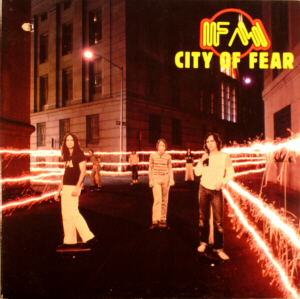
City of Fear is the fourth album by FM, a progressive rock group from Toronto, Canada, released in 1980 on Passport Records and distributed in Canada by Capitol Records, catalogue number PB-2028, and in the USA on Passport distributed by Jem Records, catalogue number PB-6004. It was produced by Larry Fast who was notable for his Synergy series of electronic music albums. A remastered edition was released by Esoteric Records (ECLEC2383) on March 25, 2013. The album made a brief appearance at #86 on the Canadian Top 100 Album charts just as the charts changed to a Top 50 ranking.

Night Lights is the third major label album by singer-songwriter Elliott Murphy produced by Steve Katz and recorded at Electric Lady Studio. It was reviewed by Dave Marsh in Rolling Stone, where he wrote "In 1973 and 1974 it seemed to many of us in New York that it was a tossup whether Bruce Springsteen, the native poet of the mean streets, or Elliott Murphy, the slumming suburbanite with the ironic eye would became a national hero." The album featured guest appearances by fellow Long Island native Billy Joel and former Velvet Underground member Doug Yule. The cover photo of Murphy standing in Times Square early one Sunday Morning was taken by photographer Michael Dakota although stylised by Steven Meisel. The song "Lady Stilletto" was thought to be an homage to Patti Smith.
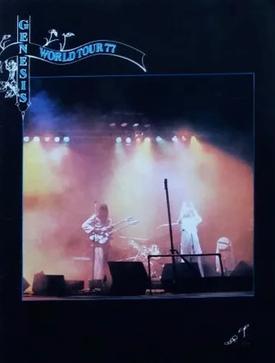
The Wind & Wuthering Tour was an English, North American, South American and European concert tour by the English rock band Genesis.

















